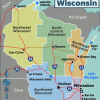Single men have been historically more likely than single women to own a home, but that gap narrowed sharply in recent years, nearly closing in 2021. However, a new Zillow analysis shows that it widened again last year, highlighting single women’s homebuying challenges, including lower salaries and a more volatile workforce experience.
In 2016, 19.4% of young single women owned a home, compared with 29.6% of young single men — a gap of 10.1 percentage points. The gap shrunk throughout the next five years as more and more women entered the workforce — leading to record-high numbers in 2020 — and women’s incomes began to rise. By 2021, that gap was a mere 1.8 percentage points.
But that progress was wiped out in 2022. The first year of the pandemic saw an outsize share of women leave their jobs to take on caregiving responsibilities, as child-care and eldercare options were in flux. According to a Pew Research Center report, women also continue to earn significantly less than men on average, receiving approximately 82 cents to every dollar earned by men. As a result, young single women have fewer options when it comes to affordable home listings than young single men.
“Single women had made great strides in narrowing the homeownership gap, but the pandemic reminded us that progress is not always linear,” said Skylar Olsen, chief economist at Zillow. “Despite women showing remarkable resilience in returning to the workforce, single women’s homeownership rate took a heavy hit in 2022. With rising and volatile mortgage rates furthering affordability challenges, the road to affordable homeownership remains an uphill battle, and it may take creative solutions or even doubling up in a home to achieve that dream.”
After growing to 28.6% by 2021, the homeownership rate for single women dropped to 24.5% last year, wiping out almost half the gains made since 2016, when single women’s homeownership was at an all-time low of 19.4%. At the same time, the homeownership rate for single men increased 2.7 percentage points in 2022 to 33.1%.
Single women looking to buy a home in Pittsburgh, St. Louis or Detroit — which are among the nation’s 50 largest metro areas — will find the highest share of affordable listings. Single women in Atlanta, Baltimore, Washington, D.C., and Raleigh are most able to compete with single men in the for-sale market; single women in those metros, on average, can afford at least 2% of all active listings and at least 90% of the listings single men can afford. On the other hand, Cincinnati, Kansas City, Oklahoma City, Minneapolis, Jacksonville and New Orleans see the largest gender-based disparity in housing affordability, with single women able to afford fewer than 70% of the homes that single men can afford.
Click here to read the full report by Zillow.














